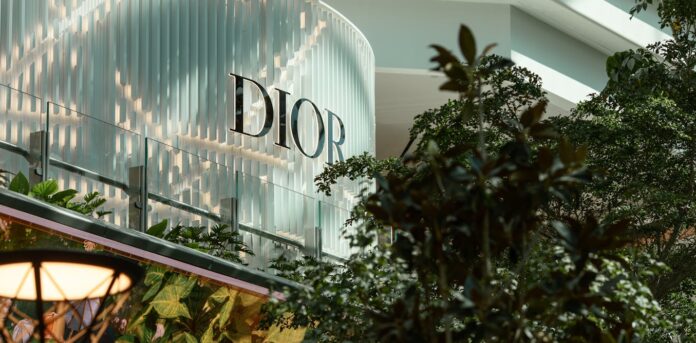How can luxury brands position themselves in this region? If the sector benefits from historically strong purchasing power in the Arabian Peninsula, it must also deal with cultural values between modesty and exaltation of success.
The Middle East, and more specifically the Arabian Peninsula, is historically marked by a rich cultural heritage and high purchasing power. This region today positions itself as a key player in the global luxury market. Exceptional quality, exclusivity, aesthetic refinement, ability to arouse positive emotions in consumers, these are the features which define the sector. However, one person’s luxury is not necessarily another’s, so this object refers to deeply subjective characteristics. Adapting to everyone’s needs remains an objective for companies positioned in this niche.
In the Middle East, these considerations come into their own with a singular challenge: maintaining a strategic customer experience despite the inherent tension between the desire to preserve strong traditional values and the need to adapt to changing market demands. Profound paradoxes in perspective. This region indeed represents a major consumer market for luxury products, but it is also the scene of significant behavioral developments which are redefining the marketing strategies of high-level brands.
A typical example is the wearing of the abaya (long traditional dress), a seemingly uniform garment whose customization possibilities make it a showcase of individual preferences and behaviors, as well as a source of personal distinction and prestige.
Frictions between behaviors and values
As part of a research paper written by Ani Zakarian, we studied in several Middle Eastern countries, interviewing 19 representatives of luxury brands and consumers of their products. Our results confirm that the latter are looking for social recognition and exclusive products that clearly demonstrate their prestige and success, which reflect a position in a specific social class rather than a simple income level. In local representations, any purchase of luxury products is not a simple expense, but an investment in self-esteem, important from a traditional point of view. Consuming luxury is a way of belonging to a group, of displaying one’s status and rank and of emphasizing one’s prestige. Furthermore, offering a prestigious good is also a way of expressing generosity, a strong value in regional cultural codes.
A representative says it well:
“This is a clientele who, culturally, needs recognition of their status. »
Among the younger generations, and particularly in Dubai, social networks serve as a sounding board to amplify theostentatious effect of their consumption. Luxury is seen as a symbol of prestige, but it must be used within a specific cultural framework. The respondents agree on the important role of strong values in purchasing behavior. One of them testifies:
“There are three main cultural values that really influence luxury purchasing behavior in the region: social status, hospitality and religion. »
This is where the friction between behaviors and values comes into play. The Muslim religion plays a subtle, but important role. Depending on local interpretations and customs, it can influence consumption habits. In some cases, it encourages modesty, in others, it can be interpreted as support for generosity and success. Through these paradoxes, the consumption of luxury products appears as a bridge between the “me” and others which can be expressed in two ways. On the one hand, the consumption of prestigious goods serves to satisfy individual needs, to assert oneself as a person by responding to purely selfish concerns. On the other hand, this consumption makes it possible to satisfy a need for social belonging, but also to express gratitude and generosity towards others.
Whether you are managers looking for strategies or employees wondering about the choices of their hierarchy, receive our thematic newsletter “Company(s)”: the keys to research for professional life and advice from our experts.
Subscribe today
For brands, the challenge of singularity
Debates between traditional domestic approaches and modern foreign trends resulted in a solution known ashybriditywhich allows for skillful fusion. Many prestigious brands are engaging in this religious adaptation by designing specific articles and accessories. This phenomenon is reaching its peak in the Middle East and Asia. Cultural hybridization is seen as a solution to paradoxes, as this professional explains:
“Serving an international clientele means understanding and respecting cultural diversity. It’s not just about aesthetic preferences, but also about varied cultural practices and sensibilities. »
By valuing and celebrating these cultural aspects, brands establish a stronger emotional connection with their audiences, which improves customer engagement and loyalty. He continues:
“We also host community events to strengthen connections with our customers and make them part of our family. »
How, then, can we maintain a strong identity for internationalized brands? No brand, even the most emblematic, can rely on its legitimacy alone. The essence of contemporary luxury no longer lies in the product itself, as in traditional luxury, nor in the brand, characteristic of modern luxury, but rather in the relationship that the brand maintains with its customer.
This relationship is largely based on the proposition of a unique and memorable experience, rather than on a promise. It is no longer a question of offering a singular product offering, but a conceptual experience experienced as unique by potential consumers. Another point for reflection: this adaptation to cultural norms can contribute to perpetuating stereotypes or reinforcing social norms sometimes considered restrictive. This is the observation that offers us Muriel Rozelier which shows the role of luxury brands in the dynamics of behavioral change.
The daring business project launched by Palestinian Christina Ganim illustrates this observation well. The entrepreneur, who offered high-end lingerie to the Saudi women’s market in 2017, experienced real commercial success. This project is a good example of cohabitation and hybridization between strong traditional values such as modesty on the one hand and the desire to please oneself and to please on the other.
This success can be described as surprising as this market was until then considered ultraconservative and traditionalist. This example shows that overcoming stereotypes is a key to resolving cultural paradoxes in the Middle East.

